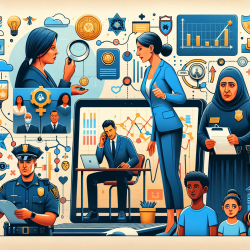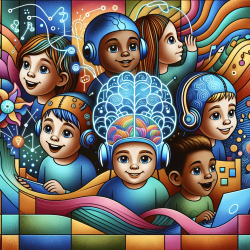Introduction
In the world of speech-language pathology, the power of storytelling is not new. However, the integration of digital storytelling (DST) in therapeutic settings is emerging as a revolutionary approach. A recent study, "Protocol for the evaluation of a digital storytelling approach to address stigma and improve readiness to seek services among veterans," provides valuable insights that can be applied to our practice, particularly in online therapy services for children.
The Study: A Closer Look
The study conducted by Bunnell et al. (2017) evaluated the effectiveness of AboutFace, a DST resource designed to help veterans recognize PTSD and motivate them to seek evidence-based treatment. The study's findings suggest that DST can be a powerful tool in reducing stigma and improving attitudes toward seeking mental health services.
Key Findings
- Reduction in Stigma: The DST approach effectively reduced perceived stigma among veterans, making them more open to seeking help.
- Improved Service Readiness: Veterans exposed to DST showed increased readiness to engage with mental health services.
- Peer Support: The shared experiences of veterans in the DST videos created a sense of community and support.
Implications for Practitioners
As practitioners, we can harness the power of DST to improve outcomes for children in online therapy settings. Here are some ways to implement the findings:
- Create Relatable Content: Develop digital stories that children can relate to, featuring characters and scenarios that mirror their own experiences.
- Foster a Sense of Community: Use DST to create a sense of belonging and support among children, reducing feelings of isolation.
- Enhance Engagement: Utilize engaging storytelling techniques to capture children's attention and encourage active participation in therapy.
Encouraging Further Research
The potential of DST in therapeutic settings is vast and warrants further exploration. Practitioners are encouraged to conduct their own research to tailor DST approaches to their specific client populations. By doing so, we can continue to innovate and improve therapeutic outcomes.
Conclusion
The integration of digital storytelling in therapy offers a promising avenue for reducing stigma and enhancing service readiness. By applying the insights from the study on veterans to our practice, we can create more supportive and effective therapeutic environments for children.
To read the original research paper, please follow this link: Protocol for the evaluation of a digital storytelling approach to address stigma and improve readiness to seek services among veterans.










